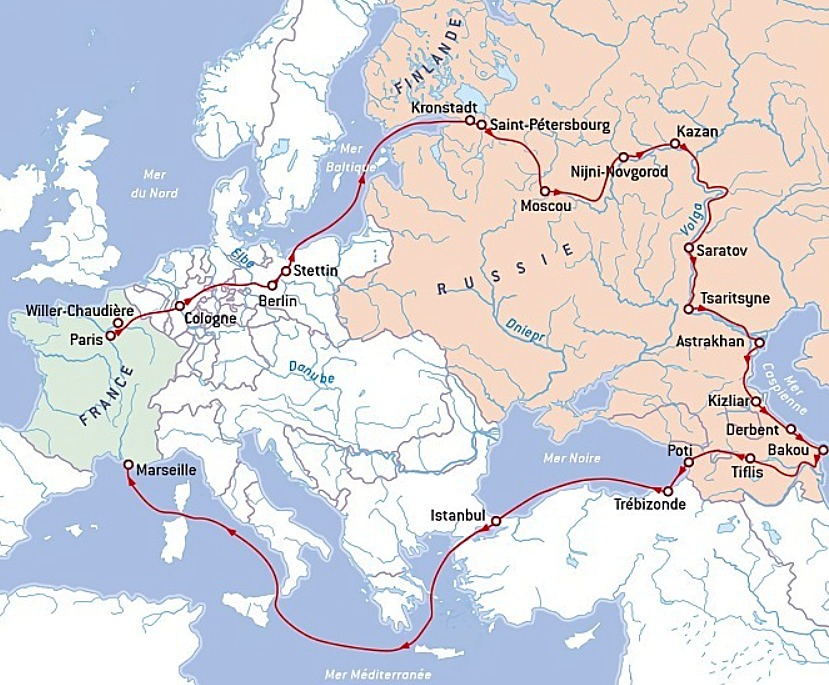Map by Reddit user denn23rus
In 1858, Alexandre Dumas was already famous. The author of The Three Musketeers and The Count of Monte Cristo had conquered the literary world, but he yearned for new adventures.
When he received an invitation to visit Russia, the 57-year-old writer didn’t just accept; he turned it into an epic two-year journey that would take him from the cafés of Paris to the shores of the Caspian Sea.
A Route That Defies Logic (In the Best Way)
Looking at this map, you might wonder if Dumas was actually trying to get to Russia or if he was just allergic to straight lines.
The route reads like a choose-your-own-adventure novel: Paris to Brussels, then sweeping north through Germany to the Baltic, across to Saint Petersburg, down through Moscow and into the Russian heartland, then dramatically south to the Caucasus, across to Baku on the Caspian Sea, and finally the long trek back through Istanbul, Marseille, and home.
More Than Just Sightseeing
This wasn’t a vacation; it was research in motion. Dumas was documenting everything, from the opulence of Russian palaces to the rough-hewn villages of the Caucasus. He met with nobility, shared meals with peasants, and absorbed the cultures of dozens of cities.
His observations would later fill multiple volumes of travel writing, offering French readers a window into a Russia most would never see.
The Caucasus Detour
The southern swing through Tsaritsyne, Astrakhan, and Baku is particularly fascinating. While most European travelers stuck to Moscow and Saint Petersburg, Dumas ventured into territories that were still being contested, where Russian, Persian, and Ottoman influences collided.
This wasn’t tourist Russia; this was frontier Russia, and Dumas couldn’t resist its pull.
The Long Way Home
After reaching Baku, the easternmost point of his journey, Dumas could have retraced his steps. Instead, he looped back through the Black Sea region, visiting Tiflis, Poti, and Trebizond before heading to Istanbul.
From there, he hugged the Mediterranean coast back to Marseille. Even his return journey was an adventure.
Why It Matters Today
In an age of budget airlines and 48-hour city breaks, Dumas’ journey reminds us what travel used to mean: immersion, curiosity, and the willingness to let the road take you where it wants. He didn’t optimize for efficiency; he optimized for experience. His two years on the road produced not just books, but a deeper understanding of the vast cultural landscape between Western Europe and Central Asia.
Sometimes the best stories aren’t about the destination. They’re about having the courage to take the scenic route.
Help us out by sharing this map:
